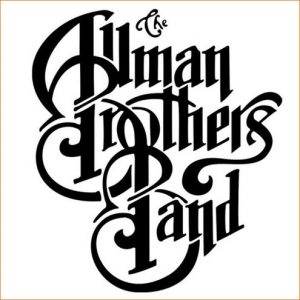The Birmingham News, February 25, 2005
By Mary Colurso
David Hood, a founding member of the Muscle Shoals Rhythm Section, still keeps an office at 1000 Alabama Ave. in Sheffield.
Actually, Hood says, the space is more of a storage room for his instruments, amplifiers, photos, LPs, awards and, of course, gold records. A narrow path has been carved out among them, leading to a desk and a couple of chairs.
“I’m a pack rat,” says Hood, a bass player in his early 60s.
For nearly 40 years, he has made music with a long list of artists that includes James Brown, Percy Sledge, Willie Nelson, Aretha Franklin, Carlos Santana, Simon & Garfunkel, Delbert McClinton, the Staple Singers and Rod Stewart.
Memorabilia from his career is dear to Hood’s heart, and he’s keeping it close now that the Muscle Shoals Sound Studios has shut its doors for good.
The low-slung concrete structure across from the Tennessee River soon will become the home of Cypress Moon Productions, a local film company.
According to Tonya S. Holly, Cypress Moon’s president, movies will be the primary focus there, but she plans to make sure the building also is equipped for audio recording.
“Movies and music go hand in hand,” says Hood, who knows Holly and often works with her husband, a guitar player. “It wouldn’t surprise me a bit to record there again.”
Cypress Moon, Hood says, has offered to let him maintain his cluttered office intact. But he and other music lovers realize that things at 1000 Alabama Ave. never will be the same.
“I am mourning the loss of the studios,” Hood says. “But you’ve got to move on. The recording business has changed so that you don’t need to have a big recording studio like you did in the old days. Technology has changed. It’s a computer-based situation.”
Pro Tools and other digital software hadn’t even been invented when Hood and three other Rhythm Section members – Jimmy Johnson, Barry Beckett and Roger Hawkins – split with FAME studios in 1969 and started their own recording business in a former casket warehouse at 3614 Jackson Highway.
Producer Jerry Wexler discovered the grungy place in northwest Alabama and brought Cher with him, recording an album that took its title from the studio’s address. Before long, Linda Ronstadt was walking through the doors, and so were the Rolling Stones, Lynyrd Skynyrd, Paul Simon and Leon Russell.
In 1978, Hood and his partners moved the Muscle Shoals Sound Studios to a larger, fancier location – a 31,000-square-foot structure that once housed a U.S. Naval Reserve unit. Creative clients included two famous Bobs – Seger and Dylan – as well as Jimmy Buffett, Dire Straits, John Prine and the Oak Ridge Boys.
And that’s where the studios have stayed, in the historic spot Hood calls “a culmination of all our hopes and dreams.”
Those dreams certainly didn’t die in 1985, he says, when Malaco Records, an R&B-gospel label from Jackson, Miss., bought the Muscle Shoals Sound Studios.
Malaco kept its consoles active through 1995 and beyond, but recording sessions at 1000 Alabama Ave. began to decline considerably. The remote location – two or three hours from the nearest airport – doomed the business, Hood believes, along with a digital revolution that made recording gear more compact and accessible to all types of musicians.
The studios have been up for sale for a couple of years, Hood says. Malaco even listed the property on eBay in 2003, with an asking price of $650,000.
Hood considered that “a pretty good deal,” and as president of the Muscle Shoals Music Association, he had hoped that another label or group of musicians would take over eventually. Still, he says, a film studio isn’t a bad option.
“At least they’re not going to tear it down and build condos,” Hood says.
Two vintage recording consoles reportedly have been sold by Malaco, but the fate of other items and memorabilia in the studios (including a collection of classic microphones) hasn’t been determined.
The Rock and Roll Hall of Fame and Museum in Cleveland might end up with some of it, according to Rolling Stone magazine.
Also, David Johnson, executive director of the Alabama Music Hall of Fame in Tuscumbia, says he has asked for “everything they have,” intending to expand an exhibit on the Muscle Shoals Sound. Malaco seems interested, Johnson says, but he’s waiting to see which, if any, artifacts will be donated to the museum.
Hood, taking a more cynical view, predicts that Malaco will end up selling pieces of the studios’ past to the highest bidders. He says he’s keeping his own memorabilia – particularly the gold records – locked up tightly.
“We did something special in this little bitty town,” he says. “Nobody ever thought we would. That whole building is a trophy, and I’m very proud of it.”
Copyright 2005 al.com. All Rights Reserved.



